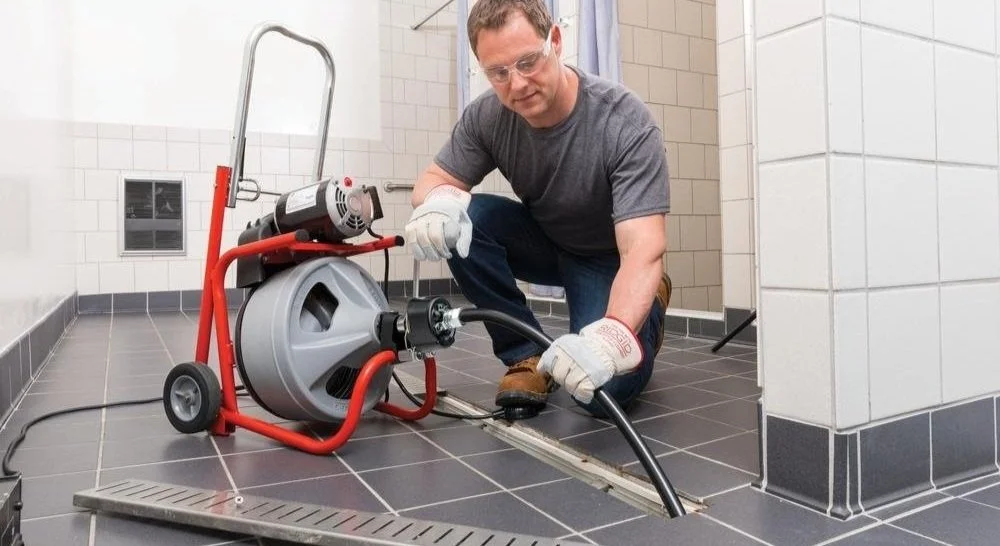Hydro Jetting vs. Snaking: A Comprehensive Comparison
When dealing with clogged drains and pipes, two common methods used by professionals are hydro jetting and snaking. Each method has its own set of advantages and is suitable for different types of blockages and pipe conditions. Understanding the differences between these two techniques can help homeowners and property managers make informed decisions about the best approach for their plumbing needs.
What is Hydro Jetting?
Hydro jetting is a process that uses high-pressure water to clear blockages and clean the inside of pipes. This method involves inserting a hose with a specialized nozzle into the pipe. The nozzle emits water at high pressure, which can range from 1,500 to 4,000 psi (pounds per square inch). The force of the water can cut through debris, grease, tree roots, and other obstructions, effectively flushing them out of the plumbing system.
Advantages of Hydro Jetting:
Thorough Cleaning: Hydro jetting not only removes clogs but also cleans the inside of pipes, removing sludge and buildup that can cause future blockages.
Effective on Tough Blockages: The high pressure can break through tree roots and other stubborn obstructions that snaking might not handle.
Environmentally Friendly: This method uses only water, avoiding the need for harsh chemicals.
Long-term Solution: By thoroughly cleaning the pipes, hydro jetting can prevent future clogs, reducing the frequency of maintenance.
Disadvantages of Hydro Jetting:
Cost: Hydro jetting can be more expensive than snaking due to the equipment and expertise required.
Not Always Necessary: For simple clogs, hydro jetting might be overkill and a more costly option than needed.
What is Snaking?
Snaking, also known as drain augering, involves using a long, flexible, metal cable with a corkscrew-like tip. The snake is manually or mechanically inserted into the pipe, and the tip rotates to break up or retrieve the clog. Snakes come in various sizes, with longer and more powerful versions available for larger pipes and tougher clogs.
Advantages of Snaking:
Cost-Effective: Generally, snaking is less expensive than hydro jetting, making it a more accessible option for minor clogs.
Less Risk of Damage: The mechanical action of a snake is less likely to damage pipes compared to the high-pressure water used in hydro jetting.
Quick Solution: For minor and straightforward clogs, snaking can quickly restore flow to the pipes.
Disadvantages of Snaking:
Less Thorough: Snaking might clear the immediate blockage but doesn’t clean the pipe walls, potentially leaving behind debris that can cause future clogs.
Limited Effectiveness on Tough Clogs: Snakes can struggle with severe blockages such as tree roots or solidified grease.
Short-term Solution: Without addressing the underlying buildup in the pipes, clogs can reoccur more frequently.
When to Use Each Method
Hydro Jetting is Ideal for:
Severe blockages caused by tree roots, heavy grease, or other tough obstructions.
Preventative maintenance to clean out sludge and buildup from pipe walls.
Commercial properties or older plumbing systems with frequent clogging issues.
Snaking is Ideal for:
Minor to moderate blockages that are easily accessible.
Situations where cost is a significant concern.
Older or fragile pipes where high-pressure water might cause damage.
Final Thoughts: Evaluating Hydro Jetting and Snaking
Both hydro jetting and snaking are valuable tools in a plumber's arsenal, each with specific use cases and advantages. Hydro jetting offers a more comprehensive and long-term solution by thoroughly cleaning pipes, but it comes at a higher cost and with a potential risk to older pipes. Snaking is a cost-effective, quick fix for minor clogs but may not address deeper or more severe blockages as effectively. Consulting with a professional plumber can help determine the best method for your specific plumbing issues, ensuring that your pipes remain clear and functional.

